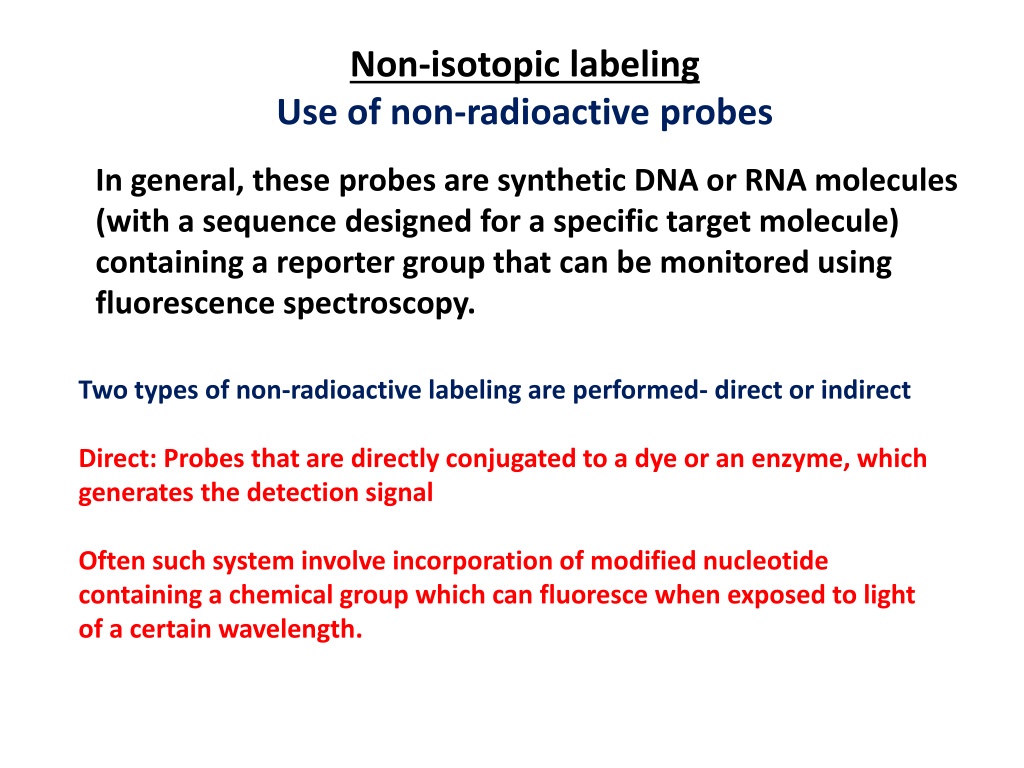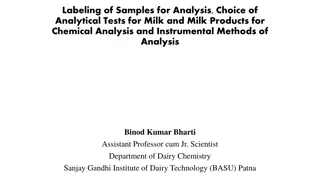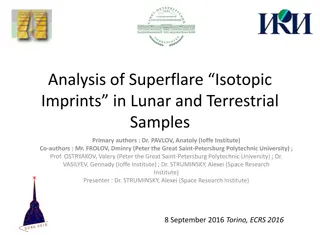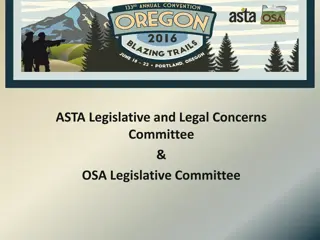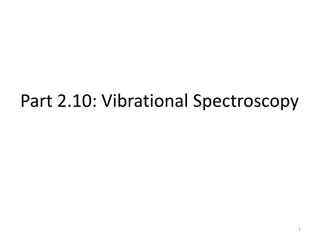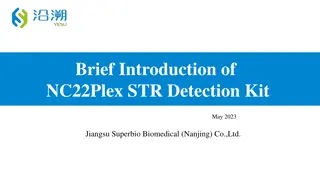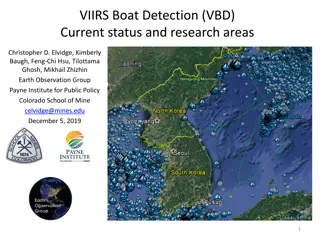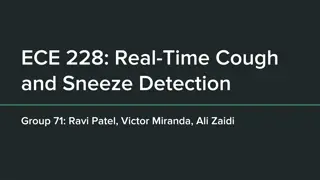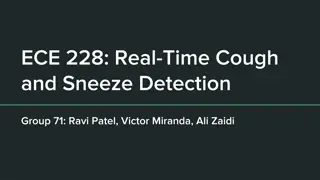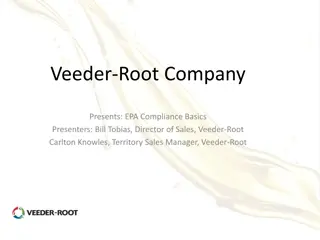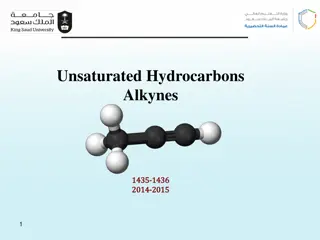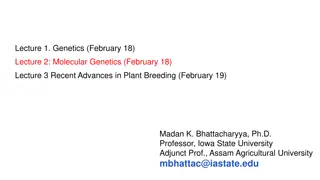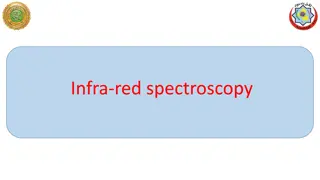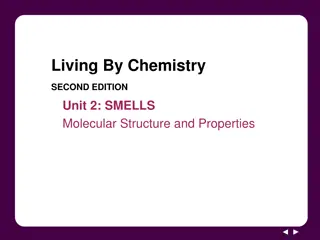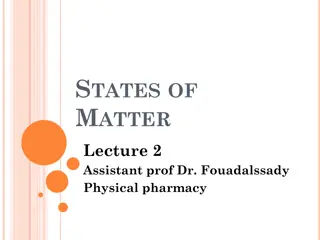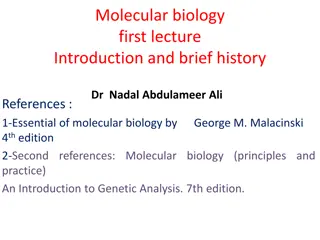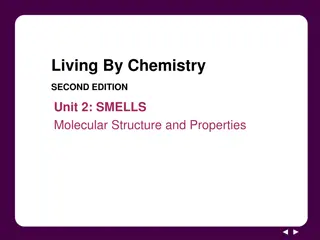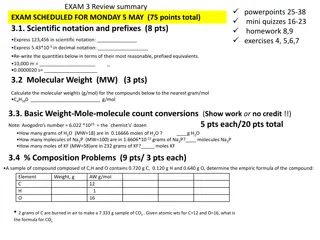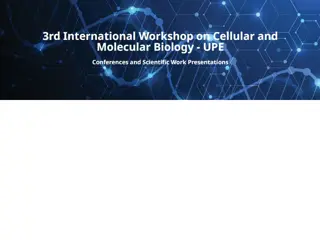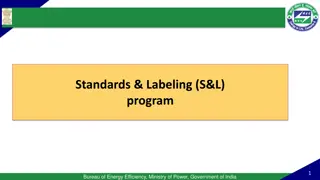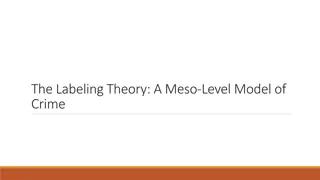Non-Isotopic Labeling for Molecular Detection
The use of non-radioactive probes in molecular detection involves synthetic DNA or RNA molecules with specific target sequences and reporter groups detectable via fluorescence spectroscopy. Direct and indirect labeling methods utilize fluorescent dyes or enzymes conjugated to modified nucleotides, allowing for specific target molecule detection. Anti-digoxigenin antibodies and biotin-streptavidin systems are also employed for colorimetric, chemiluminescent, or fluorescent detection. Hybridization with probes recognized by antibodies enables precise molecular staining and analysis in biological samples.
- Non-Isotopic Labeling
- Molecular Detection
- Non-Radioactive Probes
- Fluorescence Spectroscopy
- Antibody Detection
Download Presentation

Please find below an Image/Link to download the presentation.
The content on the website is provided AS IS for your information and personal use only. It may not be sold, licensed, or shared on other websites without obtaining consent from the author. Download presentation by click this link. If you encounter any issues during the download, it is possible that the publisher has removed the file from their server.
E N D
Presentation Transcript
Non-isotopic labeling Use of non-radioactive probes In general, these probes are synthetic DNA or RNA molecules (with a sequence designed for a specific target molecule) containing a reporter group that can be monitored using fluorescence spectroscopy. Two types of non-radioactive labeling are performed- direct or indirect Direct: Probes that are directly conjugated to a dye or an enzyme, which generates the detection signal Often such system involve incorporation of modified nucleotide containing a chemical group which can fluoresce when exposed to light of a certain wavelength.
1. Fluorescein 2. Rhodamine
1. Chemical coupling of a reporter Molecule to a nucleotide precursor 2. After incorporation into DNA, the reporter groups can be specifically bound by an affinity molecule (very high affinity) 3. Conjugated to a marker molecule or group which can be detected in a suitable assay. The reporter molecules on modified nucleotide need sufficiently far from nucleic acid backbone so affinity molecules can bind efficiently. A Spacer of 4-16 carbon atoms is needed to separate the nucleotide from the reporter group. to protrude
Anti-Digoxigenin antibodies, coupled either to alkaline phosphatase (AP), horseradish peroxidase (HRP), fluorescein or rhodamine for colorimetric, and chemiluminescent or fluorescent detection. CDP-Star is a chemiluminescent substrate for alkaline phosphatase
1. biotin-streptavidin system Streptomyces avidinii 2. Digoxigenin : a plant steroid obtained from Digitalis species Digoxigenin specific antibody Both biotin and digoxigenin are linked to uracil. T has to be replaced with linked dUTP in DNA
After hybridization, probes are recognized by an anti-digoxigenin antibody conjugated with alkaline phosphatase. During incubation with the substrate NBT/BCIP, this enzyme deposits a brownish purple precipitate in the embryos, which then turns a deep blue color after exposure to ethanol. In this way, cells which have produced a particular mRNA are stained, and the pattern of stained cells across an entire embryo can be seen, such as the simple seven-stripe pattern of the ftz gene shown here.
Blotting Techniques Blotting refers to immobilization of sample nucleic acids/proteins onto a solid support It involves the transfer of nucleic acids or proteins from a gel strip to a blotting membrane (nylon or nitrocellulose) 1. A Southern blot is a method used in molecular biology for detection of a specific DNA sequence in DNA samples. Southern blotting combines transfer of electrophoresis-separated DNA fragments to a filter membrane and subsequent fragment detection by probe hybridization. E. M. SOUTHERN 1975 Step 1: DNA purification Step 2: Fragmentation Step 3: Gel Electrophoresis Step 4: Denaturation Step 5: Blotting Step 6: Hybridization
Procedure 1. DNA fragments are denatured in strong alkali 2. Transfer to membrane 3. Fixing of DNA (immobilization) A. Nitrocellulose paper: baking: 80 degree for 2 h B. Nylon Membrane: 1 h 70 degree or UV irradiation 4. The membrane is placed in a solution of labeled (radioactive or non-radioactive) RNA, ssDNA or oligonucleotides which is complementary to sequence present in the target DNA. 5. Removal of excess probes 6. If probe is radioactive: Autoradiography If probe is not radioactive: the membrane is treated with chemiluminescent substrate to detect the labeled probes, and the exposed to photographic films. The probe will form band on the film at a position corresponding to the complementary sequence on the membrane.
Application of Southern blotting Southern blotting technique is used to detect DNA in given sample. DNA finger printing is an example of southern blotting Used for paternity testing, criminal identification, victim identification To isolate and identify desire gene of interest. Used in restriction fragment length polymorphism To identify mutation or gene rearrangement in the sequence of DNA Used in diagnosis of disease caused by genetic defects Used to identify infectious agents
2. A northern blot is a laboratory method used to detect specific RNA molecules among a mixture of RNA. Northern blotting can be used to analyze a sample of RNA from a particular tissue or cell type in order to measure the RNA expression of particular genes.
Procedure The first step in a northern blot is to denature, or separate, the RNA within the sample into single strands, which ensures that the strands are unfolded and that there is no bonding between strands. The RNA molecules are then separated according to their sizes using a method called gel electrophoresis. Following separation, the RNA is transferred from the gel onto a blotting membrane. (Although this step is what gives the technique the name "northern blotting," the term is typically used to describe the entire procedure.) Once the transfer is complete, the blotting membrane carries all of the RNA bands originally on the gel. Next, the membrane is treated with a small piece of DNA or RNA called a probe, which has been designed to have a sequence that is complementary to a particular RNA sequence in the sample; this allows the probe to hybridize, or bind, to a specific RNA fragment on the membrane. In addition, the probe has a label, which is typically a radioactive atom or a fluorescent dye. Thus, following hybridization, the probe permits the RNA molecule of interest to be detected from among the many different RNA molecules on the membrane.
Northern blot analysis of EGFR, EGF and TGF- in the normal pancreas and pancreatic cancer. Streit, S., Michalski, C., Erkan, M. et al. Northern blot analysis for detection and quantification of RNA in pancreatic cancer cells and tissues. Nat Protoc 4, 37 43 (2009). https://doi.org/10.1038/nprot.2008.216
Applications of Northern Blot The technique can be used for the identification and separation of RNA fragments collected from different biological sources. Northern blotting is used as a sensitive test for the detection of transcription of DNA fragments that are to be used as a probe in Southern Blotting. It also allows the detection and quantification of specific mRNAs from different tissues and different living organisms. Northern blotting is used as a tool for gene expression studies related to overexpression of cancer-causing genes, and gene expression during transplant rejects. Northern blotting has been used as a molecular tool for the diagnosis of diseases like Crohn s disease. The process is used as a method for the detection of viral microRNAs that play important roles in viral infection.
The northern blot technique was developed in 1977 by James Alwine, David Kemp, and George Stark at Stanford University. Northern blotting takes its name from its similarity to the first blotting technique, the Southern blot, named for biologist Edwin Southern. Northern blotting was employed as the primary technique for the analysis of RNA fragments for a long time; however, new, more convenient, and cost-effective techniques like RT-PCR have slowly replaced the technique.
